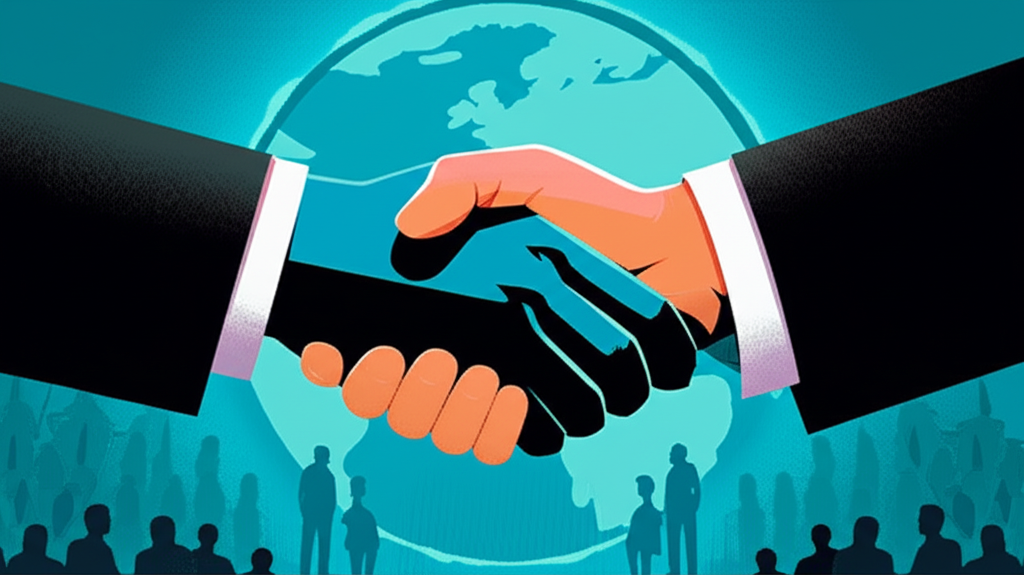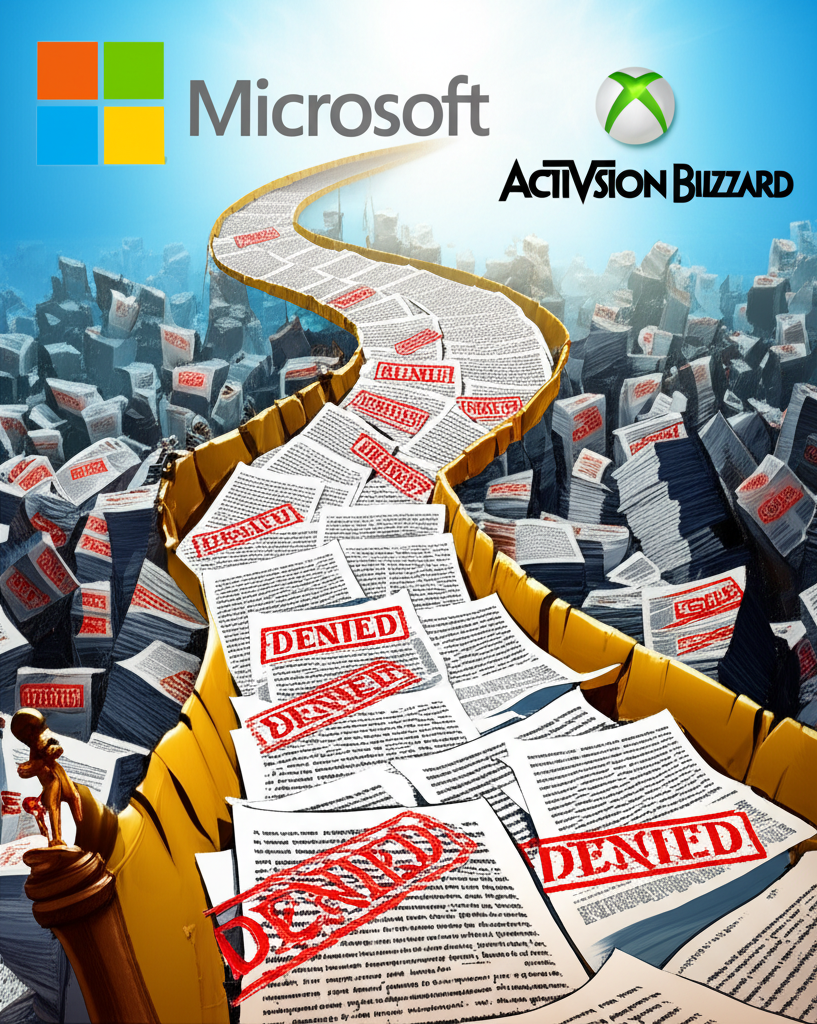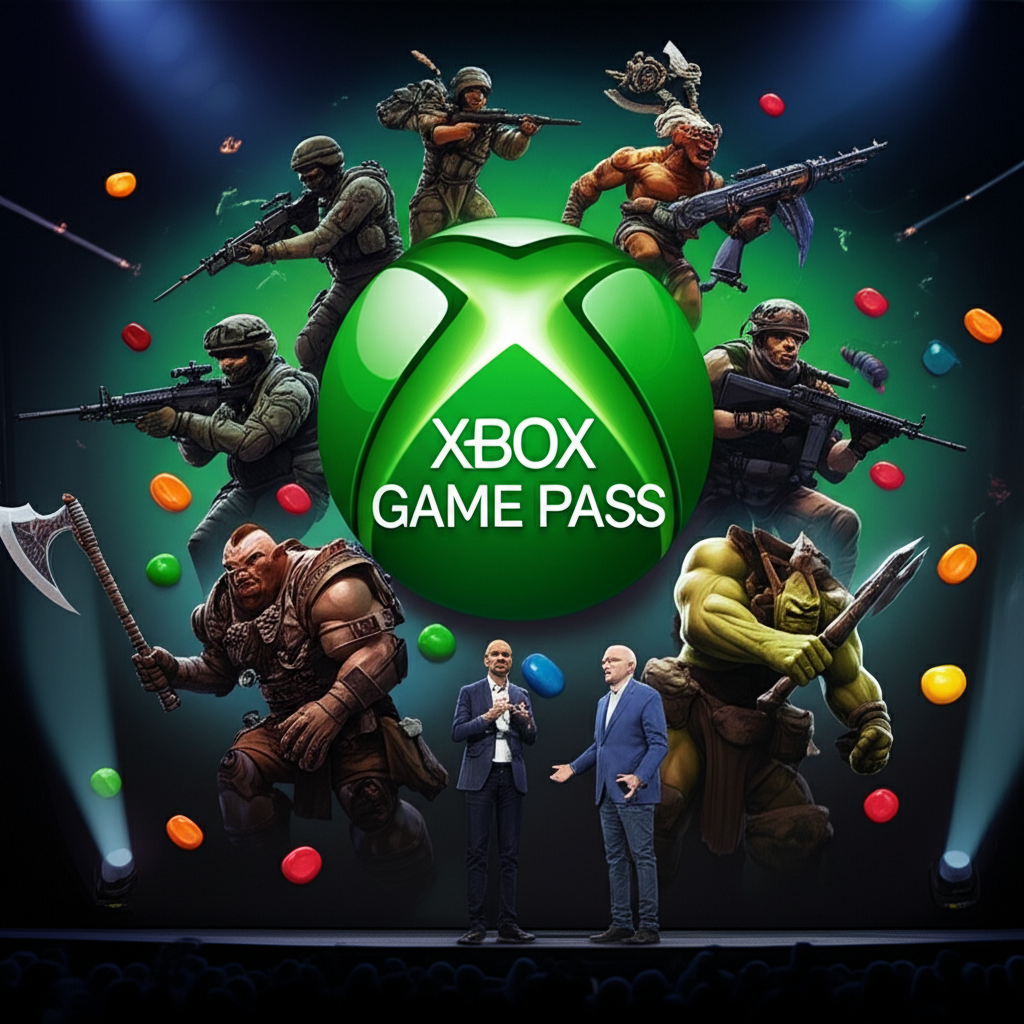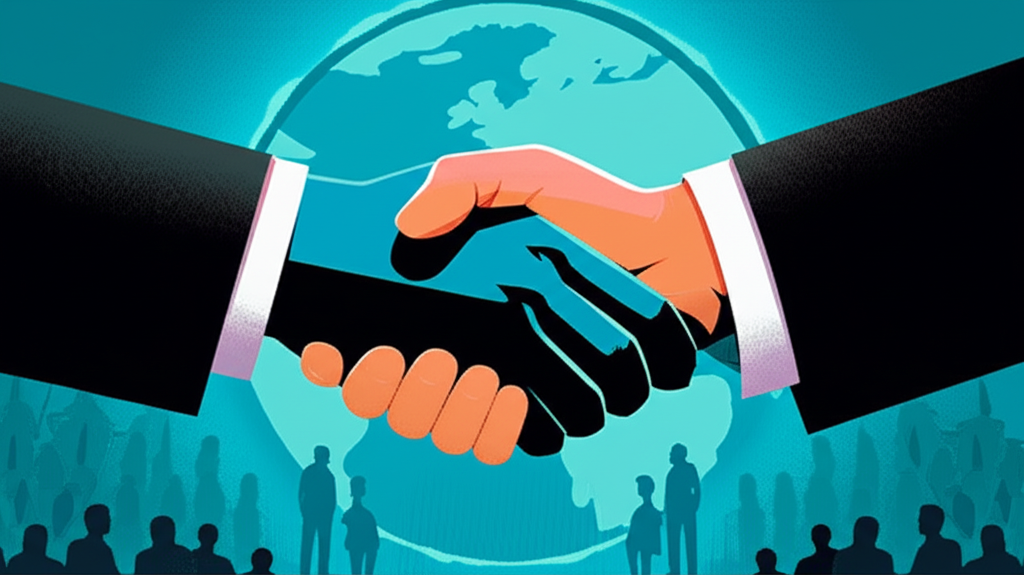Introduction: The Definitive Answer
Yes, the Activision Blizzard acquisition by Microsoft has officially gone through. After nearly two years of regulatory scrutiny, legal challenges, and strategic negotiations, Microsoft finalized the deal on October 13, 2023. Valued at approximately $69 billion, this transaction stands as the largest in gaming history, reshaping the industry’s power structure and setting a new benchmark for tech mergers. The completion marks a pivotal moment—not just for Microsoft and Activision Blizzard, but for the future of game development, cloud streaming, and digital entertainment competition worldwide.

The Journey to Closure: A Regulatory Odyssey
Far from a simple handshake, the road to acquiring Activision Blizzard was a high-stakes global battle that tested the limits of modern antitrust law. Microsoft’s ambition to expand its gaming footprint triggered one of the most scrutinized corporate takeovers in recent memory, involving multiple jurisdictions, courtrooms, and last-minute concessions.
Initial Announcement and Intent
On January 18, 2022, Microsoft made a bold move by announcing its intent to acquire Activision Blizzard. The vision, articulated by CEO Satya Nadella and Xbox chief Phil Spencer, centered on accelerating Microsoft’s growth in mobile, PC, and cloud gaming. With franchises like Call of Duty, World of Warcraft, and Candy Crush under one roof, the company aimed to supercharge Xbox Game Pass and challenge dominant players in the digital entertainment space. It wasn’t just about content—it was about access, scale, and long-term platform dominance.
Key Regulatory Hurdles: FTC, EU, and the CMA
Almost immediately, regulators stepped in. The U.S. Federal Trade Commission (FTC), the European Commission (EC), and the UK’s Competition and Markets Authority (CMA) each launched investigations, concerned that Microsoft could leverage Activision Blizzard’s game library to weaken competition—particularly in subscription and cloud gaming markets.
The FTC filed a lawsuit in December 2022 attempting to block the deal, arguing that Microsoft could withhold key titles like Call of Duty from rival platforms. The case went to trial in a U.S. federal court, drawing intense media attention and setting a precedent for how regulators assess digital market power.
Meanwhile, the European Commission raised initial concerns but ultimately approved the deal in May 2023. Microsoft secured approval by committing to license Activision Blizzard games to cloud gaming services for ten years—a binding agreement that opened the door for broader access and eased antitrust fears in the region.

The UK CMA’s Pivotal Role and Reversal
The most formidable obstacle came from the UK’s CMA. In April 2023, the regulator provisionally blocked the acquisition, citing serious concerns about Microsoft’s potential to dominate the emerging cloud gaming market. The CMA argued that combining Activision Blizzard’s content with Microsoft’s Azure cloud infrastructure and Xbox Game Pass would create an unfair advantage, limiting consumer choice and stifling innovation.
Instead of retreating, Microsoft restructured the deal. In a surprising and unprecedented move, the company agreed to sell the cloud streaming rights for all current and future Activision Blizzard console and PC games—spanning the next 15 years—to Ubisoft Entertainment SA. This meant that Ubisoft, not Microsoft, would control the licensing of these games to cloud platforms globally (except in the European Economic Area, where Microsoft’s prior commitments applied).
This structural remedy satisfied the CMA’s core concerns. On October 13, 2023, the UK regulator granted final approval, removing the last major barrier to completion.
Final Approval and Closing Date
With all major regulatory hurdles cleared, Microsoft officially closed the acquisition on October 13, 2023. The announcement marked the end of a grueling two-year journey and the beginning of a new era for gaming. Microsoft now fully owns Activision, Blizzard, and King—the trio behind some of the most influential games of the past three decades.

By the Numbers: The Financials of the Mega-Deal
The $69 billion price tag makes this the most expensive acquisition in video game history—and one of the largest tech mergers ever. Microsoft paid $95 per share in cash for all outstanding Activision Blizzard stock, absorbing the company’s net cash in the process. To put this in perspective, the amount exceeds the GDP of several small nations and dwarfs previous industry deals, such as Sony’s acquisition of Bungie or Take-Two’s purchase of Zynga.
This level of investment signals Microsoft’s deep commitment to gaming as a core pillar of its future. Unlike traditional tech acquisitions focused on infrastructure or AI, this deal was about content, community, and long-term engagement. Activision Blizzard’s portfolio includes not just games, but massive, enduring franchises with built-in player bases, recurring revenue streams (especially from mobile), and global brand recognition. For Microsoft, it’s a strategic bet that content ownership will be the key differentiator in the next generation of digital entertainment.
What Microsoft Gained: A New Era for Gaming
The acquisition fundamentally transforms Microsoft’s position in the gaming ecosystem. It’s no longer just a hardware and platform company—it’s now a content powerhouse with unparalleled reach across genres, platforms, and demographics.
Major Intellectual Properties and Studios
Microsoft now controls a staggering lineup of franchises, including:
- Call of Duty – A cultural phenomenon and one of the best-selling video game series of all time.
- Warcraft, Diablo, Overwatch, StarCraft – Blizzard’s flagship titles, known for deep universes, competitive esports scenes, and passionate fanbases.
- Candy Crush Saga – King’s mobile juggernaut, generating billions in annual revenue through in-app purchases.
- Support studios such as Treyarch, Sledgehammer Games, and Raven Software, which have been instrumental in developing and maintaining these major series.
This breadth allows Microsoft to compete across every major gaming segment—high-end console experiences, persistent online worlds, and casual mobile play—all under a unified strategy.
Impact on Xbox Game Pass
Perhaps the most immediate benefit is the transformation of Xbox Game Pass. Already a leader in subscription gaming, the service now gains access to a vast library of Activision Blizzard content. While not every title will appear immediately, the long-term plan is clear: integrate major franchises to boost subscriber growth and retention.
Games like Diablo IV, Overwatch 2, and future Call of Duty releases are expected to join the service, either at launch or shortly after. This strengthens Game Pass’s value proposition, making it harder for competitors to match. The shift toward “Netflix for games” is accelerating, and Microsoft is now its most formidable advocate.
Strategic Positioning in the Cloud Gaming Market
Despite the cloud streaming rights being divested to Ubisoft in key markets, Microsoft still emerges stronger in cloud gaming. Its Xbox Cloud Gaming service continues to expand, and the company retains full rights to stream Activision Blizzard games through its own platform in regions outside the UK’s jurisdiction.
Moreover, the European Commission’s approval—contingent on Microsoft licensing the games to other cloud services—ensures broader accessibility, fostering a more open ecosystem. This dual approach allows Microsoft to innovate within its own cloud infrastructure while complying with antitrust requirements. The outcome is a more balanced, yet still competitive, landscape for cloud-based game delivery.
Beyond the Headlines: Unseen Impacts and Future Prospects
The implications of this deal extend far beyond corporate balance sheets and regulatory filings. Its ripple effects will shape industry dynamics, business models, and player experiences for years to come.
Implications for Activision Blizzard Shareholders
For shareholders, the acquisition brought a definitive exit. Activision Blizzard stock (ATVI) was delisted from the NASDAQ following the closure. Investors received $95 per share in cash, a significant premium over the pre-announcement price. While U.S. investors may face capital gains tax implications, the transaction offered a clear and liquid conclusion to their holdings. The company no longer exists as an independent public entity—now operating as a wholly owned subsidiary under Microsoft Gaming.
The Deal as an Antitrust Case Study
This acquisition will be studied in law schools, boardrooms, and regulatory agencies for years. The level of global scrutiny—especially the CMA’s initial block and eventual reversal based on a structural divestiture—is unprecedented. It underscores a growing trend: regulators are no longer willing to accept assurances of “no harm” without concrete, enforceable remedies.
Future tech mergers, particularly in digital content, cloud services, and subscription platforms, will face higher barriers. The Microsoft-Activision Blizzard case sets a precedent that even well-resourced companies must be prepared to restructure deals or divest key assets to gain approval. It also highlights the increasing coordination—and occasional divergence—between major regulatory bodies in the U.S., EU, and UK.
What’s Next for Activision Blizzard Games and Studios?
With integration into Microsoft now underway, the future of Activision Blizzard’s games and studios remains a topic of intense interest. Microsoft has pledged to preserve creative independence, but structural changes are inevitable. Expect:
- Greater Game Pass integration – More titles, including back-catalog content, will likely become available on the subscription service.
- Multi-platform commitments – Microsoft has agreed to keep Call of Duty on PlayStation and Nintendo Switch for at least ten years, but the long-term strategy for other franchises remains fluid.
- Increased investment in IP – Microsoft’s financial muscle could lead to revivals of dormant series like StarCraft or Legacy of Kain, or expanded live-service models for existing titles.
- Cultural and operational shifts – Merging into a larger corporate structure may influence development timelines, executive leadership, and workplace policies, particularly as Microsoft enforces its broader ESG and inclusion standards.
How these changes unfold will be closely watched by fans, developers, and competitors alike.
Conclusion: A Landmark in Gaming History
The completion of Microsoft’s acquisition of Activision Blizzard on October 13, 2023, is more than a corporate milestone—it’s a watershed moment for the gaming industry. After a marathon regulatory battle, strategic concessions, and global legal scrutiny, Microsoft has cemented its status as a dominant force across console, PC, mobile, and cloud gaming.
With a library now enriched by some of the most iconic franchises in history, Microsoft is better positioned than ever to compete in the evolving digital entertainment landscape. The deal not only reshapes content ownership and distribution but also redefines what’s possible in subscription gaming and cloud-based play. As the industry adapts to this new reality, one thing is certain: the era of consolidation is here, and the rules of the game have changed.
1. Was the Microsoft Activision Blizzard deal officially completed?
Yes, the Microsoft Activision Blizzard deal was officially completed on October 13, 2023, after nearly two years of regulatory review and legal challenges.
2. When did Microsoft officially acquire Activision Blizzard?
Microsoft officially acquired Activision Blizzard on October 13, 2023.
3. How much did Microsoft pay for Activision Blizzard?
Microsoft paid approximately $69 billion for Activision Blizzard, making it the largest acquisition in the history of the video game industry.
4. Which regulatory bodies approved the Activision Blizzard acquisition?
Key regulatory bodies that approved the acquisition include the European Commission (EC) and, eventually, the UK’s Competition and Markets Authority (CMA). The U.S. Federal Trade Commission (FTC) initially sought to block the deal but ultimately failed in court.
5. Why was the Activision Blizzard deal initially blocked by the UK CMA?
The UK CMA initially blocked the deal due to concerns that it would harm competition in the burgeoning cloud gaming market. They feared Microsoft’s control over Activision Blizzard’s content, combined with its cloud infrastructure, would stifle innovation and competition.
6. What does the Activision Blizzard acquisition mean for Xbox Game Pass?
The acquisition significantly strengthens Xbox Game Pass, as many Activision Blizzard titles, including popular franchises like Diablo and Overwatch, are expected to be integrated into the subscription service, boosting its value and subscriber base.
7. What happens to Activision Blizzard stock after the acquisition?
After the acquisition, Activision Blizzard stock (ATVI) was delisted from the NASDAQ. Shareholders received $95 per share in cash for each share they owned, and Activision Blizzard ceased to be an independent publicly traded company.
8. Does Microsoft own all Activision Blizzard games now?
Yes, Microsoft now owns all Activision Blizzard intellectual properties and studios, including major franchises like Call of Duty, Warcraft, Diablo, Overwatch, and Candy Crush. However, cloud streaming rights for these games were divested to Ubisoft to satisfy UK regulators.
9. Will Call of Duty become an Xbox exclusive?
Microsoft has committed to keeping Call of Duty on PlayStation and other platforms for at least 10 years, and it will also be available on Nintendo Switch. While Microsoft has the option to make it exclusive in the distant future, current agreements ensure its multi-platform availability.
10. What is the long-term impact of this acquisition on the gaming industry?
The acquisition has a profound long-term impact, solidifying Microsoft’s position as a major player in gaming across all platforms (console, PC, mobile, cloud). It will likely accelerate the growth of subscription services, influence future M&A activities with stricter antitrust scrutiny, and reshape content development and distribution strategies within the industry. For more details, you can refer to Microsoft’s official news on the deal closure: Microsoft Completes Acquisition of Activision Blizzard. Additionally, the CNBC report on the deal closure provides further financial context and details on the regulatory battle.

留言